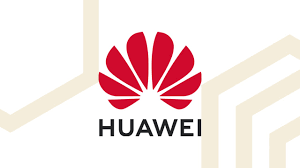March 8, 2024 - PARTNER FEATURE: Huawei Cloud showcased how it is building an AI-ready cloud infrastructure during MWC Barcelona 2024, with its biggest presence ever at one of the world’s most important ICT events.
During the Huawei Cloud Summit held on 25 February, Jacqueline Shi, President of Huawei Cloud Global Marketing and Sales Service (pictured), pointed out “AI will reshape almost everything. At Huawei Cloud, AI is a key strategy.”
Shi noted Huawei Cloud is one of the fastest growing cloud providers, with the goal of “bringing cutting-edge technologies as well as the best local service and better choices to customers”.
Outlining the company’s progress in KooVerse, a distributed cloud infrastructure spanning the world, she said over the last couple of years Huawei Cloud has built out its facilities in many countries, including Türkiye, Indonesia and Saudi Arabia, and will soon add Egyp
Huawei Cloud has obtained more than 140 security and compliance certifications globally and plans to enable more partners, especially new developers and start-ups, to grow together through its “Go Cloud, Grow Cloud” strategy.
A couple of innovations highlighted at the event were its KooVerse infrastructure, which has 85 availability zones in 30 regions across some 170 countries and regions, while its distributed QingTian architecture surpassed the limitations in compute, storage and networking for a top-class AI compute backbone with heterogeneous, peer-to-peer, full-mesh computing.
Gauss DB offers a better choice
Huawei Cloud CTO Bruno Zhang highlighted in his presentation the critical role of cloud-native and AI technologies as a driving force for industry transformation in the intelligent era.
A strong database supporting intelligent the upgrades is vital, he added. The company’s next-generation database GaussDB is a distributed relational system widely used in the finance, telecoms and government sectors.
GaussDB is an enterprise-class distributed database with more than 100,000 nodes. For availability, GaussDB ensures dual-cluster strong consistency with zero recovery point objective (RPO). For security, it is certified CC EAL4+, the highest level in the industry. For automation, GaussDB provides one-stop tools to convert and migrate 95 per cent of common syntax.
Dr Nikos Ntarmos, director of Huawei Central Software Institute’s Database Lab, explained GaussDB is a result of Huawei’s extensive experience in databases spanning 20 years. With more than 30 years of proven enterprise services, “GaussDB is the better choice for global users, especially for essential transaction and data processing needs,” he stated.
Asked why GaussDB is a better choice compared with other vendors such as Oracle, Zhang noted that while Oracle “is undoubtedly a popular database, we believe GaussDB has a lot to offer in specific use cases. It boasts high performance, availability, intelligence, and simple and smart migration and maintenance. It’s particularly well- 8 suited for services demanding top-notch performance, security and consistency, in sectors like finance and telecoms.”
He pointed out GaussDB has been selected by major international customers such as MV in Brazil, a leading medical information service provider, and operators in Thailand. “GaussDB aims to enhance database intelligence and automation, meeting the high demands of customers in the era of AI technologies.”
Building an intelligent cloud foundation
At a product and solution launch at the summit, Zhang stated: “Huawei Cloud is committed to building an intelligent cloud foundation for the telecoms industry and accelerating intelligence across industries with systematic innovation that encompasses AI for Cloud and Cloud for AI.”
In terms of AI for Cloud, Huawei Cloud is reshaping industries with its Pangu models, which have been used by telecoms customers. The Pangu R&D model, for example, helps developers generate code with just one prompt and test cases with just one click. Its Pangu telecoms model automatically troubleshoots 90 per cent of network faults in just minutes. The Pangu virtual human model boasts 95 per cent lip sync accuracy for customer service and livestreaming. The company plans to release more models.
Its Pangu models provide a three-layer decoupled architecture designed for use across various industries. Each model can be deployed on Huawei’s public cloud, dedicated zone or hybrid cloud. For example, telcos can build and run their dedicated AI platform and foundation models in their existing data centres using Huawei Cloud Stack, its hybrid cloud solution.
In Cloud for AI, Huawei Cloud is solving challenges with systematic innovation, Zhang suggested. To help telcos build intelligent cloud infrastructure, Huawei Cloud provides a solution suite comprising AI-native storage, GaussDB, data-AI convergence and distributed QingTian architecture. These are deployed and used across the cloud, network, edge and device.
Global Leap Program debuts in Europe
At the Summit, Huawei’s Cloud Native Elite Club (CNEC) unveiled its Global Leap Program themed “Leap with Cloud Native x AI”. 9 Zhang detailed seven key technical leaps that will accelerate intelligent upgrades across industries: architecture, compute, storage, data-AI convergence, application development, media technology and security.
William Dong, President of Huawei Cloud Marketing, stressed the company’s commitment to collaborating with industry organisations, such as CNCF and the China Academy of Information and Communications (CAIC) in the AI era. Through such technical communities, Dong said Huawei Cloud aims to connect businesses with the latest global technologies, best practices and industry trends. “This initiative empowers businesses worldwide to harness the potential of cloud native and AI, ultimately achieving the leap to data and AI prowess.”
Taylor Dolezal, head of ecosystem at the Cloud Native Computing Foundation (CNCF), emphasised the crucial role of cloud native technologies as the backbone of AI Infrastructure, highlighting its potential to accelerate industry-wide AI adoption.
“CNCF boasts numerous projects utilised by leading AI companies like OpenAI, providing the essential technological infrastructure for generative AI,” Dolezal stated. “Furthermore, cloud native projects like K8sGPT exemplify how we can leverage the advanced natural language processing capabilities of generative AI and the power of Kubernetes to drive industry innovation.”
Looking ahead to 2024, CNEC will prioritise the strategic integration of cloud native and AI technologies, an effort to accelerate the global adoption and advancement of AI.





